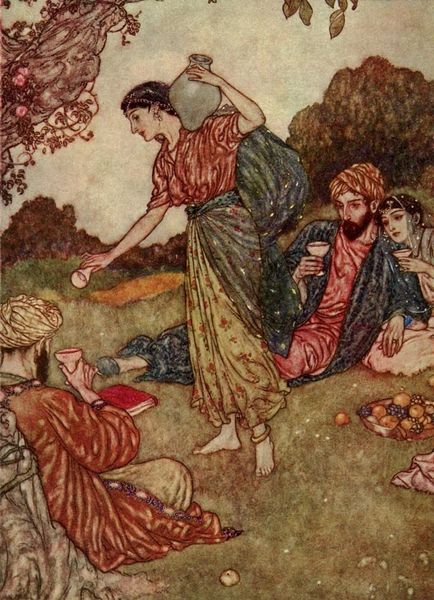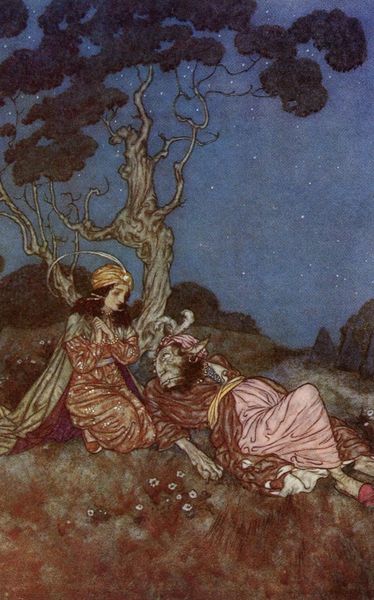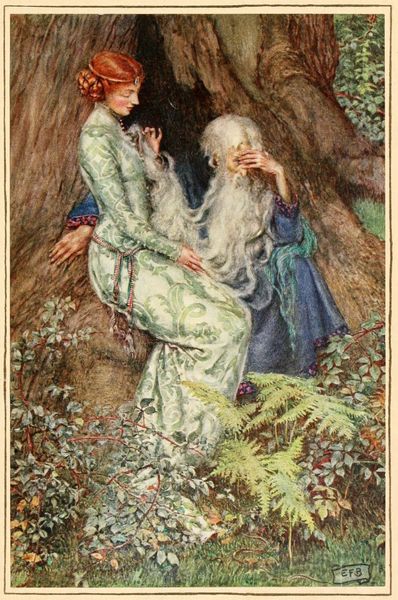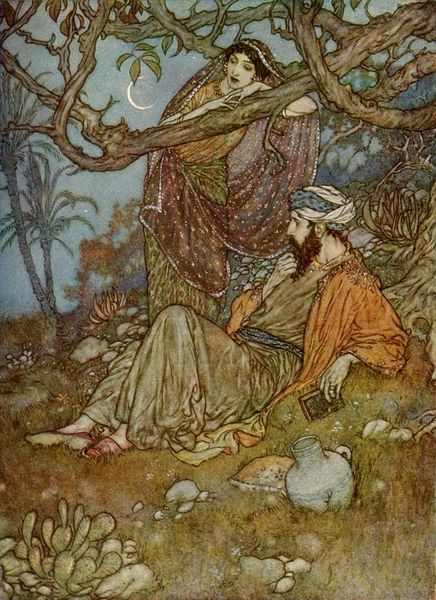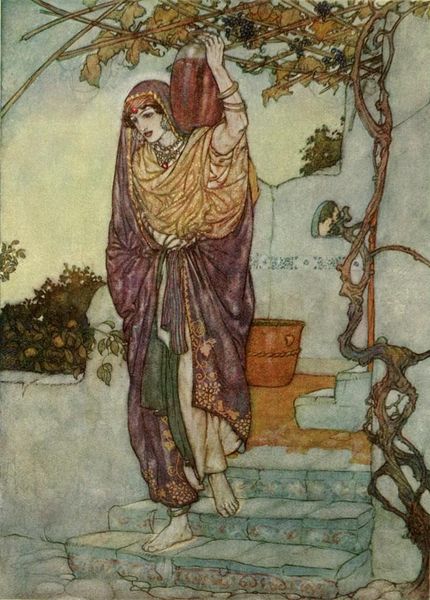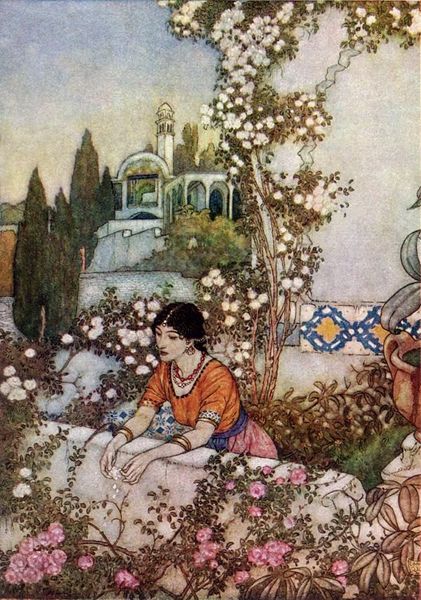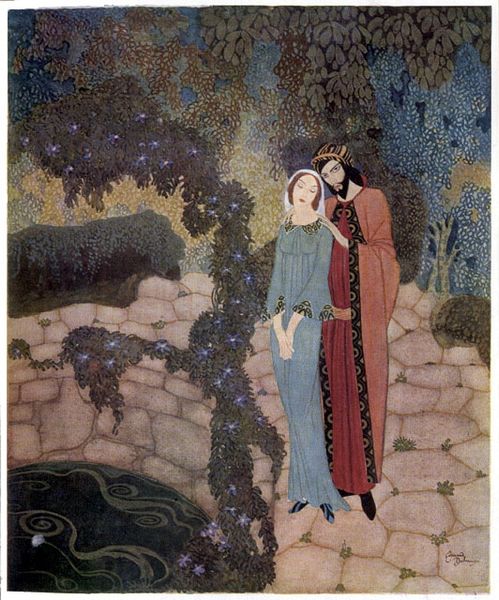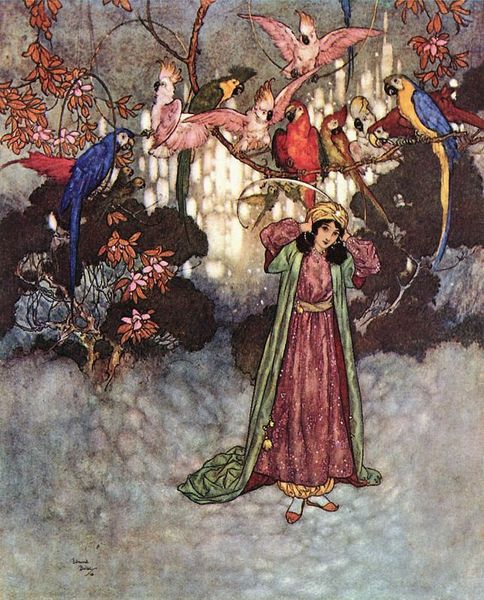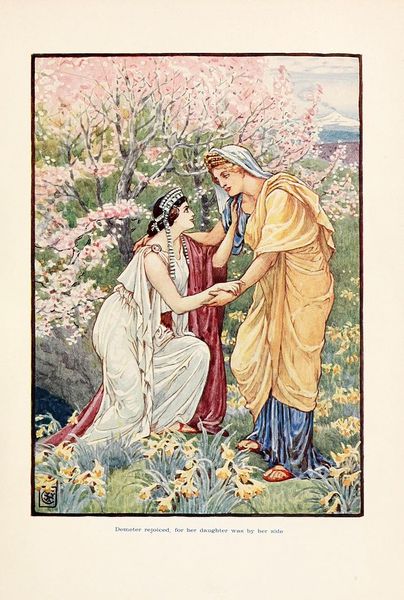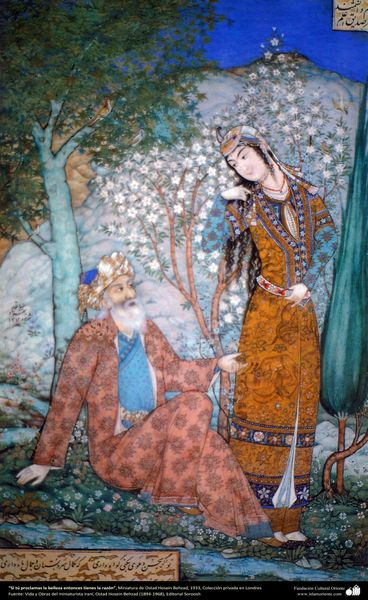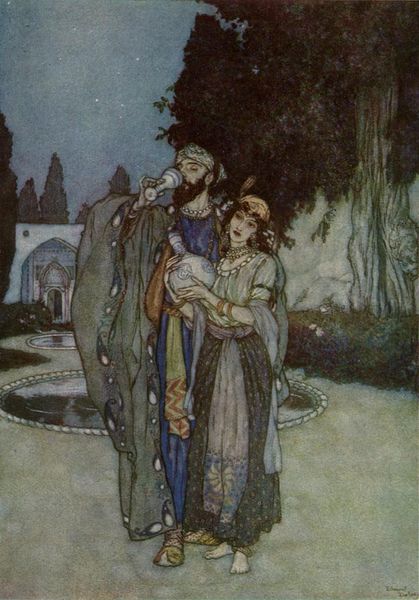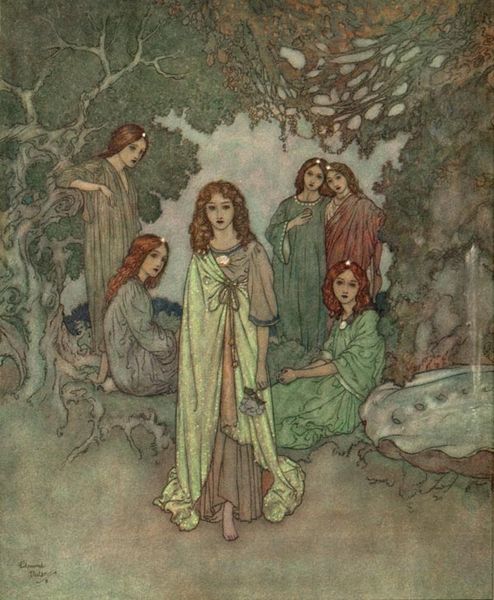
textile, watercolor
#
portrait
#
prophet
#
textile
#
text
#
watercolor
#
coloured pencil
#
romanticism
#
orientalism
#
mythology
#
symbolism
#
watercolour illustration
#
watercolor
Copyright: Edmund Dulac,Fair Use
Curator: This watercolor illustration, by Edmund Dulac, is entitled "The Angel of the Drink of Darkness, The Rubaiyat of Omar Khayyam". Editor: Whoa, instantly it's hitting me with this slightly menacing fairytale vibe, but also deeply sad? The angel is so draped, almost like a shadow… are they in mourning, or dealing the doom? Curator: It's a complex piece. Dulac's work here definitely carries strong currents of Orientalism. Looking at it now, from our contemporary vantage point, we have to consider how it exoticizes Eastern culture and constructs fantasies rooted in power imbalances. The scene it illustrates speaks to themes of mortality and hedonism prominent in Khayyam's poetry. The couple is surrounded by elements reminiscent of Persian gardens, but is there an undertone suggesting paradise is already lost? Editor: Absolutely. See how they're sprawled, kind of ruined amid all the soft colors and architectural elegance of what I guess is Persia. She looks distraught; the guy seems dazed but he is definitely resting a comforting hand on her shoulder! They're beautifully rendered but it does not disguise the looming dread. Even the spilled wine and broken jug on the floor adds to the sense of fleeting joy. Like, *drink up, because what else are you going to do*? The Angel… it is kind of judgmental, isn't it? Curator: Judgement is certainly present. There’s a push-and-pull between earthly delight and inescapable fate. We see it mirrored even in the composition—the vibrant warmth of the human figures contrasts sharply with the cool, almost spectral quality of the Angel. Dulac skillfully blends watercolor and colored pencil to convey this. We should acknowledge the reductionist portrayal of Islamic culture; nonetheless the scene captures Khayyam’s existential tension in how the inevitability of death looms over the fleeting pleasures of life. Editor: Thinking of that contrast between "earthly delights and inescapable fate" it does kinda makes you appreciate both all the more. Like maybe if that angel wasn't waiting we would all just loaf about endlessly, never appreciating beauty! Now there’s a terrible thought! Curator: It raises profound questions, and it demands that we as viewers question our own assumptions and desires and recognize how our culture views death and those different than us. Editor: Yes, always questions and that keeps me coming back. Thanks for bringing that darkness…and that light!
Comments
No comments
Be the first to comment and join the conversation on the ultimate creative platform.
